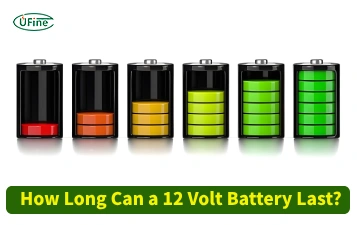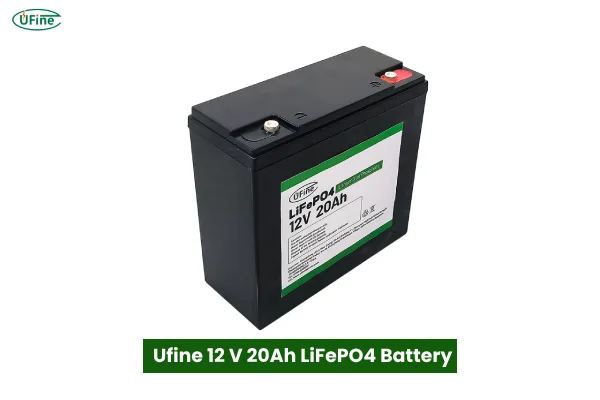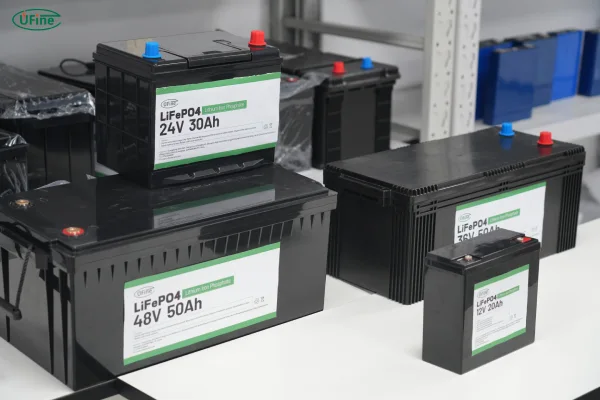
- Part 1. What does 12V 20Ah mean?
- Part 2. Battery chemistry: the foundation of runtime
- Part 3. Realistic battery runtime: basic formula
- Part 4. Key factors that influence runtime
- Part 5. Practical runtime examples (By Load)
- Part 6. Detailed comparison by battery type
- Part 7. Charging times and best practices
- Part 8. How to extend battery runtime and lifespan
- Part 9. Use cases of 12V 20Ah batteries
- Part 10. Why choose custom 12V 20Ah batteries?
- Part 11. Final thoughts
- Part 12. FAQs
The 12V 20Ah battery is a commonly used energy storage solution across a range of applications—from solar power systems and backup UPS units to mobility devices and portable electronics. One of the most frequently asked questions by users is: “How long can a 12V 20Ah battery last?”
The answer depends on various technical and environmental factors including the battery’s chemistry, load, depth of discharge, efficiency, and even temperature. In this comprehensive guide, we’ll explore all these aspects to help you accurately estimate and maximize the runtime of a 12V 20Ah battery.
Part 1. What does 12V 20Ah mean?
When we say a battery is rated at 12V 20Ah, it implies:
- 12 volts (V) is the nominal voltage.
- 20 amp-hours (Ah) is the total capacity it can deliver over time.
In terms of energy storage:
- 12V × 20Ah = 240Wh (watt-hours)
This means, in theory, the battery can supply:
- 1 amp for 20 hours,
- 2 amps for 10 hours,
- 10 amps for 2 hours, etc.
But these are theoretical values. Real-world performance depends on the battery type and how it is used.
Part 2. Battery chemistry: the foundation of runtime
Different battery chemistries affect the usable capacity, cycle life, efficiency, and runtime.
a. Sealed Lead-Acid (SLA)
- Cheap but bulky and heavy.
- Only 50% of the rated capacity is usable.
- Prone to sulfation and shorter lifespan.
b. Absorbent Glass Mat (AGM)
- Slightly better than SLA.
- Handles higher discharge rates.
- Still limited by DoD (Depth of Discharge).
c. Lithium-Ion (Li-ion)
- Lightweight and energy-dense.
- Can use 85–95% of capacity.
- More expensive but longer life.
d. Lithium Iron Phosphate (LiFePO4)
- Safest lithium chemistry.
- Deep discharges up to 100% without damage.
- 2,000–5,000 life cycles.
Part 3. Realistic battery runtime: basic formula
The general formula to estimate runtime:
Runtime (hrs)=Battery Capacity (Wh)/Load Power (W)
- Battery = 12V 20Ah = 240Wh
- Device Load = 60W
Runtime=240/60=4 hours
Important: With lead-acid, usable energy is ~50%, so the runtime is only 2 hours.
Part 4. Key factors that influence runtime
a. Load Consumption
Higher power draw drains the battery faster. For example:
- 10W light = ~24 hours
- 100W appliance = ~2.4 hours
b. Battery Chemistry
Lithium batteries offer more usable energy than lead-acid counterparts.
c. Depth of Discharge (DoD)
- SLA: 50%
- Li-ion: 85–95%
- LiFePO4: 90–100%
Deeper discharges in SLA shorten lifespan, but lithium handles it better.
d. Discharge Rate (C-rate)
Faster discharges reduce effective capacity. A high C-rate can lower runtime by 20–30%, especially in SLA.
e. Ambient Temperature
Ideal operating temperature: 15°C–35°C. Performance drops in cold or high-heat conditions.
f. Battery Age
Capacity degrades over time. SLA loses 20–30% within a year; LiFePO4 loses ~10% over several years.
Part 5. Practical runtime examples (By Load)
| Application | Power Usage | Runtime (LiFePO4) | Runtime (Lead-Acid) |
|---|---|---|---|
| LED Lamp | 10W | ~24 hrs | ~12 hrs |
| CPAP Machine | 40W | ~6 hrs | ~3 hrs |
| Mini Fridge | 60W | ~4 hrs | ~2 hrs |
| WiFi Router | 8W | ~30 hrs | ~15 hrs |
| CCTV Security System | 20W | ~12 hrs | ~6 hrs |
| Portable Fan | 25W | ~9.6 hrs | ~4.8 hrs |
| Electric Scooter Motor | 150W | ~1.6 hrs | ~0.8 hrs |
Part 6. Detailed comparison by battery type
| Feature | SLA | Li-ion | LiFePO4 |
|---|---|---|---|
| Usable Capacity | ~50% (120Wh) | 85–95% (204Wh) | 90–100% (216Wh–240Wh) |
| Cycle Life | 300–500 cycles | 800–1000 | 2000–5000 |
| Weight | 6–8kg | 3kg | 2.5–3kg |
| Safety | Moderate | High | Very High |
| Cost | Low | High | Moderate |
Part 7. Charging times and best practices
| Chemistry | Typical Charge Time | Charging Voltage | Recommended DoD |
|---|---|---|---|
| SLA | 6–8 hours | 13.8–14.4V | 50% |
| Li-ion | 3–5 hours | 12.6–12.8V | 85% |
| LiFePO4 | 2–4 hours | 14.6V | 90–100% |
Tip: Always use a charger compatible with the battery chemistry.
Part 8. How to extend battery runtime and lifespan
- Choose LiFePO4 for best depth of discharge and longevity.
- Don’t fully discharge lead-acid batteries.
- Use DC-powered devices to avoid inverter losses.
- Charge with a quality charger that prevents overcharging.
- Store batteries in cool, dry conditions at 40–60% SOC.
Part 9. Use cases of 12V 20Ah batteries
A 12V 20Ah battery is ideal for:
- Solar-powered lighting
- Remote IoT sensors
- Medical devices (CPAP, infusion pumps)
- Portable camping equipment
- Electric scooters, bikes, and wheelchairs
- Backup systems for routers and modems
- Marine electronics
- Security surveillance systems
Part 10. Why choose custom 12V 20Ah batteries?
Sometimes, off-the-shelf batteries don’t meet the specific voltage, size, or output needs of your project.
That’s where custom battery solutions come in.
Ufine Battery: Your Custom Battery Expert
Ufine Battery is a leading Chinese lithium battery manufacturer specializing in custom battery packs. We design and manufacture a wide range of solutions, including:
- 12V 20Ah LiFePO4 and Li-ion batteries
- Cylindrical, pouch, and ultra-thin cell designs
- High-rate and low/high temperature-resistant batteries
- Custom voltage, current, and capacity configurations
- Built-in BMS for safety and performance
Whether you’re developing a medical device, powering solar gear, or electrifying a mobility platform, Ufine Battery can tailor the ideal solution for your needs.
Contact us today for technical consultation or a quote on your custom 12V 20Ah battery.
Part 11. Final thoughts
A 12V 20Ah battery can last anywhere from 1.5 hours to over 30 hours, depending on:
- The device’s power consumption
- Battery type and discharge limits
- Environmental and charging conditions
Lithium batteries (especially LiFePO4) offer more runtime, deeper discharge tolerance, and significantly longer lifespan than lead-acid. For long-term performance and safety, LiFePO4 is usually the optimal choice.
Part 12. FAQs
How many hours will a 12V 20Ah battery last for a 50W device?
With a LiFePO4 battery: ~4.8 hours. With SLA: ~2.4 hours due to lower usable capacity.
Can I charge a 12V 20Ah LiFePO4 battery with a regular 12V charger?
Only if the charger is compatible with LiFePO4. Otherwise, you risk damaging the battery.
Can I connect multiple 12V 20Ah batteries in series or parallel?
Yes. Series increases voltage; parallel increases capacity. Make sure batteries are identical.
What’s the difference between 12V 20Ah Li-ion and LiFePO4?
LiFePO4 offers better safety, longer cycle life, and can handle deeper discharges than standard Li-ion.
How long will a 12V 20Ah battery run a 150W appliance?
With LiFePO4, expect ~1.6 hours. With SLA, less than 1 hour.
Related Tags:
More Articles

12 Volt Batteries: How Long Can They Really Last?
Discover the real lifespan of 12V batteries. Compare lead-acid, AGM, gel, and lithium (LiFePO₄) batteries — and find out why LiFePO₄ lasts over 10 years.
Lithium-ion vs Lithium Polymer Battery: Which is Better?
Compare Li-ion and LiPo batteries in energy, safety, lifespan, and uses. Learn which battery is best for drones, laptops, and wearables.
Power Pack Battery vs. Power Bank: What’s the Difference?
Compare power pack battery and power bank: capacity, devices, portability, and best uses to pick the right portable battery pack.
12V STD vs 12V AGM: Meaning, Differences, and Which Is Better
Understand what STD and AGM batteries mean, their key differences, and which 12V battery fits your needs best in 2025.
Group 65 Battery Guide: Power, Lifespan & Comparison
Compare the best Group 65 batteries for trucks & SUVs. Learn about size, types, price, and lifespan to find the best Group 65 battery for your vehicle.




